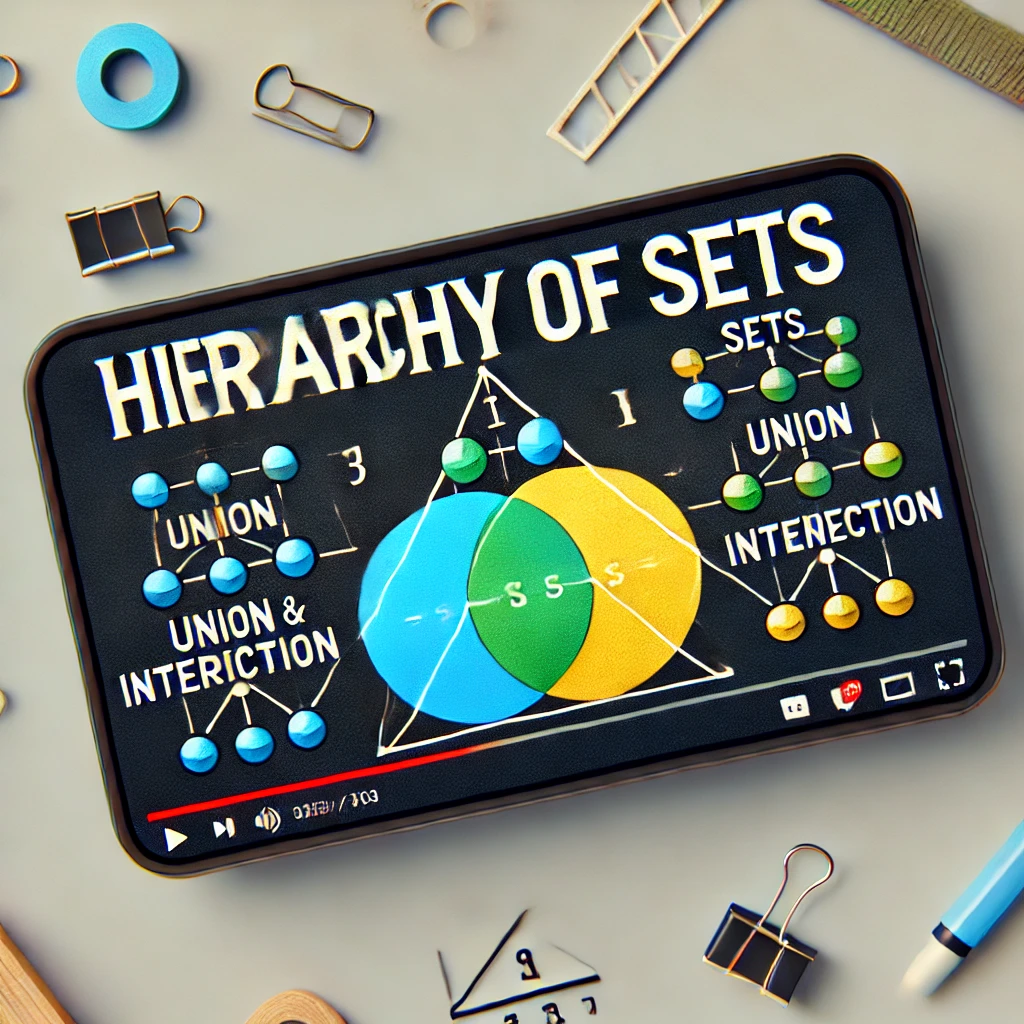&
Hierarchy of Sets
Universal Set (\( U \))
The universal set (\( U \)) contains all elements under consideration in a specific context.
- Example 1: If studying numbers, \( U = \{1, 2, 3, 4, 5, 6, 7, 8, 9, 10\} \).
- Example 2: If studying letters, \( U = \{\text{a, b, c, …, z}\} \).
Subset (\( A \subseteq U \))
A set \( A \) is a subset of \( U \) if all elements of \( A \) are also in \( U \).
- Example 1: \( A = \{1, 2, 3\} \), \( U = \{1, 2, 3, 4, 5\} \), then \( A \subseteq U \).
- Example 2: \( B = \{\text{a, e, i, o, u}\} \), \( U = \{\text{a, b, c, …, z}\} \), then \( B \subseteq U \).
Proper Subset (\( A \subset B \))
A set \( A \) is a proper subset of \( B \) if all elements of \( A \) are in \( B \), but \( B \) contains at least one element not in \( A \).
- Example: \( A = \{1, 2, 3\} \), \( B = \{1, 2, 3, 4, 5\} \), then \( A \subset B \).
Power Set (\( P(A) \))
The power set is the set of all subsets of a given set \( A \).
- Example 1: If \( A = \{1, 2\} \), then:
\[
P(A) = \{\emptyset, \{1\}, \{2\}, \{1, 2\}\}
\] - Example 2: If \( A = \{a, b, c\} \), then \( P(A) \) contains \( 2^3 = 8 \) subsets:
\[
P(A) = \{\emptyset, \{a\}, \{b\}, \{c\}, \{a, b\}, \{a, c\}, \{b, c\}, \{a, b, c\}\}.
\]
Summary
- Universal Set (\( U \)): The largest set under consideration.
- Subset (\( A \subseteq U \)): A set contained within another set.
- Proper Subset (\( A \subset B \)): A subset that excludes at least one element of the parent set.
- Power Set (\( P(A) \)): The set of all subsets of a given set.
Video
Connect with PostNetwork Academy
For more learning resources, visit our platforms:
- Website: www.postnetwork.co
- YouTube: www.youtube.com/@postnetworkacademy
- Facebook: www.facebook.com/postnetworkacademy
- LinkedIn: www.linkedin.com/company/postnetworkacademy
